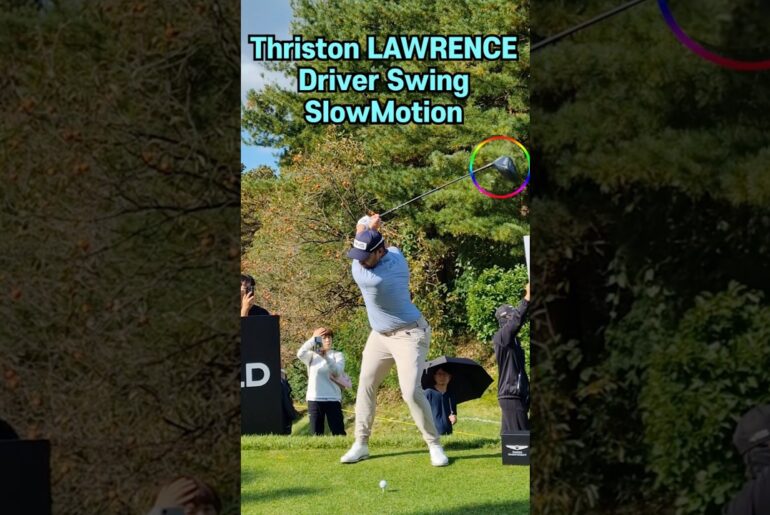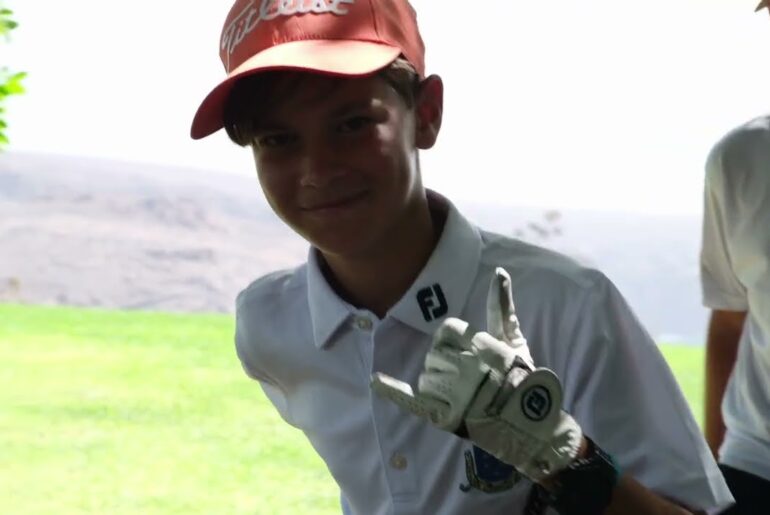If you’re struggling with your driver or irons because you’ve been told to “shallow the club,” this video is for you. PGA & TPI Certified coach Dana DeSarle breaks down why swing plane is directly related to your height, club length, and posture — and how tall players like Scottie Scheffler approach it differently.
You’ll learn:
How swing plane changes with different club lengths (wedge, 7 iron, driver)
Why forcing a shallow move can actually hurt tall players
The fundamentals of the PGA teaching & coaching model Principle 2 on swing plane
How to use the Lead Arm Drill to naturally find your perfect path and plane
This is a no-nonsense, fundamentals-based approach to help you hit more consistent, solid shots without overcomplicating your swing.
⛳ Subscribe for no-BS golf instruction that works
I teach real players— from pros to weekend warriors—how to build repeatable, powerful swings using proven PGA & TPI teaching models. No fluff. No gimmicks. Just results.
📈 Want to break 90? 80? Compete in tournaments?
You’ll find full swing fundamentals, course management tips, and mental game hacks to level up your game.
🛒 Check out my favorite training aids, golf fitness tools, and supplements:
👉 https://linktr.ee/danadesarle
📲 Follow me on social & get in touch:
All links to Instagram, TikTok, Facebook, and coaching programs are here:
👉 https://linktr.ee/danadesarle
🔔 Be sure to LIKE, SUBSCRIBE, COMMENT, and hit the THANKS button to support the channel. It means the world and helps me keep the content coming! 🍻
#golf #golftips #golfswing #golfdrill #golfcoaching #golfswingtips #posturefix #golflesson #golfswingdrill
I had two students come to me this week, both like 6’2, 63, and they’re all trying to make this crazy shallow move, and they’re so they’re tall. We’re all swinging about a 45 in driver. If I’m tall, you look at the swing plane of Scotty Shuffler, he’s steep. Like, yeah, I’m 5’10, so this is going to be a little more shallowing around. But these guys are tall, so it’ be like me ripping my driver down to here. Same thing. So, look how steep this is. If I try to shallow this and then get way stuck inside, now I’m off the path line and throwing it out there. So, the whole thing of shallowing is in relation to swing plane and your height. So, we’re going to talk about swing plane. And if you’re tall and you’ve been trying to shallow out and do all this crazy stuff, screwing yourself up. Let’s get rid of that and get ourselves back on track. Discuss in the PGA teaching and coaching model principle two on swing plane. Today there, I’m Dana Darley, PGA, TPI certified. Yes, we all know golf is effing hard. So, I’m trying to make it simple for us by sticking to the fundamentals here off of the PJ teaching coaching model. All right, let’s dive into it. We can get an idea of the swing plane. We’ve all seen the Logan book five fundamentals and you could see he’s got the glass plane going down there. You know, all kinds of people interpret the swing plane differently. Some started from the angle of the club, whatever. This is basically for our baseline. But with a driver and a 60° wedge, you’ll see the plane is very different. So, like if I took this back and came back to impact here, we could see how it’s on plane. If I try to make some crazy shallow move and then get here, look where that is. Now, we’re off plane inside the path line. And then now I got to like flip the hands to save it. 60°. So, now I’m much closer to the ball. So, now as we get closer and if the ball’s about there, you could see how the plane changes. So, the plane changes with the length of your club. I never really thought about it that way that we were all pretty much swinging about the same length club. Maybe you have an inch over if you’re 6’2 or something and then like the standard length driver is anywhere between 45 and 46 in. But so like Rory’s about 510, I’m 510 swinging more around favoring a draw cuz that’s just his natural path line is going to be more in this area down to the ball and you know there’s your swing plane and you’re dialed in. Yeah, you look at Tiger swing really right on plane. Yeah, they talk about the one plane and is it two planes, whatever. Hey, there’s a lot of ways to get it done as long as you’re kind of coming back basically along the same plane. Yeah, there’s all like say the arguments of being exact. Ryson seems to try to get it on one plane. Tiger’s pretty much close to one plane. It’s all about kind of back to that impact position and like in titleless kinematic sequence, everybody has their own swing style. Your style is unique to you. How long your arms are, how much spine tilt you have, the length of your clothes. So, you know, stop trying to swing it one way. It’s all about getting into the ideal impact position and using that sequencing of hip, chest, lead arm, then trail arm, and club. Getting into the most ideal impact position. Now, I’m going to hit some and show some examples. All right, so we’re going to hit some down the line here. Before I do that though, quick story. We’ve got a great skins game here at Canyon Gate on Friday afternoons. It’s great. So, it’s all scratch and then you got to validate your birdie. So like three, let’s go ahead and get some swings and look at how the plane differs with the length of connection and extension. Now that one was good pretty good there for seven iron. All right, now let’s go to the driver. Okay, so same thing here. Look how this plane There we go. That’s pretty good. So you can see, you know, staying in TPI sequence, just basic fundamentals, trying to keep it simple, staying in whatever your natural plane line is. Just more understanding of the plane line in the whole talk about shallow and what that means. It’s it’s making some additional compensating movement. And notice how when I stay here and my spine angle stays the same. If I go here and then try to shallow, now I’m standing straight up. Now I got to flip it with my hands. I understand what these guys are saying. I mean, if you’re coming over the top, that’s an issue, but all of that is solved with lead arm drill, right? So, I’m going to do lead arm drill with driver. You get back to here and the lead arm pulls down, keeps the lag angle in place, and it just puts you right in the slot of what your plane line is. There’s no crazy movements you got to make. And lead arm drill with the driver is really hard. It’s actually a good strength test to see if you’ve gotten there. But now we’re here. And then notice it’s as you as this lead arm is pulling down, it keeps that lag angle in place. And then we’re coming through. Back of the left wrist is rotating through impact. Not overly snapping through. This pull down is very natural. Coming through. Now the trail arm is extending. And you can see I’m just staying on the plane line. So going back to the fundamental of that lead arm drill. Three sets of 10 every day takes care of a lot of things. Gets you dialed in on your path, your face, your swing plane, your lag angles, your club face positioning, all that stuff. So keep doing that every day. You’ll be dialed in. Hopefully you like this one. Of course, if you do, like, subscribe, all that cool stuff. Thanks for watching.








5 Comments
Great advice!🏌️
Trying this next time! 👍🏽
Never thought about this before 🤔
great video with a great explanation and great advice! keep it up g
It makes sense plane changes with same length club